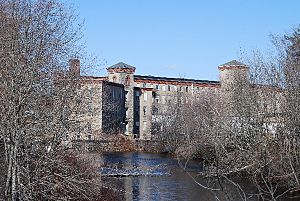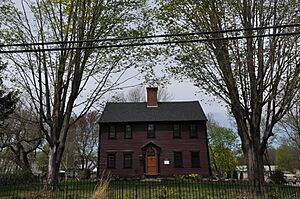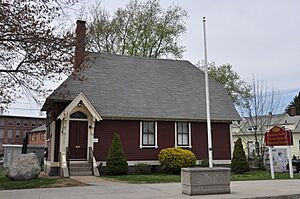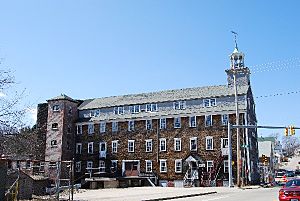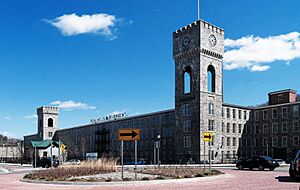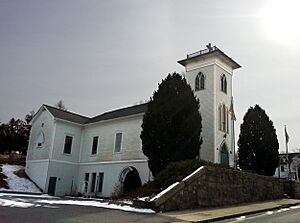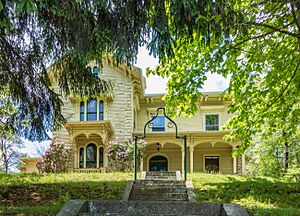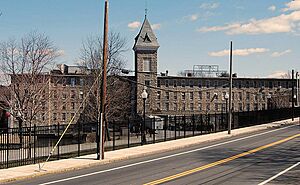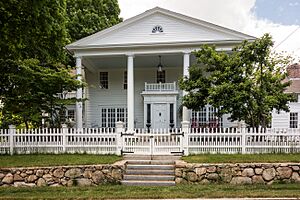National Register of Historic Places listings in West Warwick, Rhode Island facts for kids
West Warwick, Rhode Island, is a town with a rich history, especially known for its old mills and buildings. Many of these important places are listed on the National Register of Historic Places. This is like a special list kept by the United States government that recognizes buildings, sites, and objects that are important in American history, architecture, archaeology, engineering, or culture. When a place is on this list, it means it's worth protecting and learning about!
In West Warwick, these historic places tell stories about how people lived and worked long ago, especially during the time when factories and mills were very important. They show us how the town grew and changed over the years.
Contents
Historic Places in West Warwick
Centreville Mill
The Centreville Mill is an old factory building located on Bridal Avenue. It was added to the National Register of Historic Places on June 10, 2005. This mill played a big role in the town's past, showing how important textile manufacturing was in West Warwick.
Silas Clapp House
The Silas Clapp House is a historic home found on East Greenwich Avenue. This house was recognized for its historical importance on May 7, 1973. It gives us a peek into what homes looked like and how people lived in West Warwick many years ago.
Crompton Free Library
The Crompton Free Library building, located on Main Street, became a registered historic place on November 20, 1978. Even though it might not be a library anymore, this building is a reminder of how important education and reading were to the community in the past.
Crompton Mill Historic District
The Crompton Mill Historic District includes several buildings, like those at 20 Remington Street and 53 and 65 Manchester Street. This whole area was added to the National Register on July 14, 2006. It's a collection of buildings that show the history of the Crompton Mills, which were a major part of West Warwick's industrial story.
Lippitt Mill
The Lippitt Mill, located at 825 Main Street, is another important old factory building. It was added to the National Register of Historic Places on January 11, 1974. Mills like Lippitt were central to the economy and daily life in West Warwick for a long time.
Royal Mill Complex
The Royal Mill Complex, found at 125 Providence Street, became a registered historic place on April 29, 2004. This large group of mill buildings shows the scale of industry that once thrived in West Warwick, providing jobs and shaping the town.
St. Mary's Church and Cemetery
St. Mary's Church and its cemetery, located on Church Street, were added to the National Register on November 21, 1978. This site is important for its religious history and architecture, showing the community's spiritual life and traditions.
William B. Spencer House
The William B. Spencer House, at 11 Fairview Avenue, was recognized as a historic place on February 14, 2012. This house is a great example of the homes built in West Warwick during a certain period and tells us about the people who lived there.
Valley Queen Mill
The Valley Queen Mill, located at 700 Providence Street, joined the National Register on January 19, 1984. Like other mills in the area, it represents the industrial heritage of West Warwick and its role in textile production.
West Winds
West Winds, found at 300 Wakefield Street, was added to the National Register on May 20, 1993. This property is another example of a significant historic residence in West Warwick, offering insights into the town's past.


